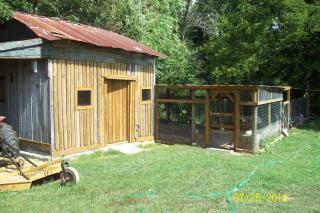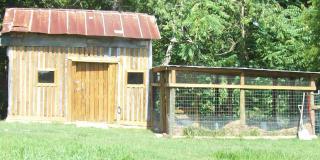Local climate is very important in determining characteristics to avoid or pursue in building a coop. I cannot tell you your experience with your climate, but I can tell you mine. I would never have a completely enclosed coop in much of Arizona (unless it also has a heat pump, A/C or evap cooler). After lots of trial and error and rebuilding, I have decided that what I prefer most is a coop where the center portion of at least two walls is solid, but the corners are all open to the air. Putting the coop under tall trees that provide lots of shade makes a huge difference in temperatures. Using lots of shade cloth also helps. In several cases I have the shade removed from the coop by several feet to provide a more layers sun block. The roof is critical, and I am currently thinking of re-doing the roofs for two of my coops--they just let in too much heat. Tall coops with plenty of air circulation near the ceiling helps. On most open sides I have rollup cloths that can be lowered to keep out rain or keep in warmth. Some are shade cloth which keeps out sun and some rain.
You may be able to take your existing coop and remove some of the solid wall panels and replace with wire. If you can provide a fan to circulate air it will help, even better point the fan at a frozen water bottle or block of ice. Misteres work for me, but you may be too humid for them to work well. If things are too hot, and you are using deep litter in the coop, you may want to rethink that for the summer time. Deep litter is good at providing extra heat during winter, not what you need if the birds are dying from heat. Depending on the size of your coop and availbility of electricity, you may want to explore using an inexpensive window air conditioner during the hottest portions of the day.











